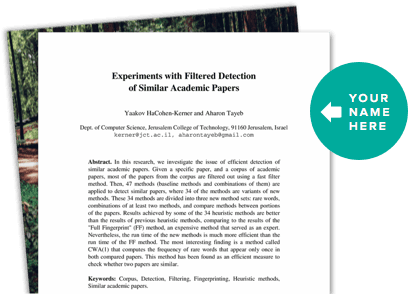About This Project
Plant incubators are essential but expensive equipment for the plant scientist: an incubator with active temperature and lighting control is over $2000. Our open-source design is under $200. Incubators are needed to maintain a controlled growth environment. We want to improve our design to reduce the barrier of entry for plant science. The hardware and software will be open-sourced and publicly available. Eventually, a component kit can be released to further increase accessibility.
Ask the Scientists
Join The DiscussionWhat is the context of this research?
For 12,000 years, mankind has relied on plant agriculture to not only survive but thrive. Plant science further shaped biology itself: from Mendel’s hereditary peas to Hooke’s discovery of cells in cork, plants remain among the most accessible organisms for citizen scientists to explore science and the natural world.
At Open Plant, hosted by Genspace in Brooklyn, we are genetically modifying Marchantia (liverwort) to produce insulin. This involves cloning insulin and reporter genes in bacteria, transforming the plant, and propagating its cultures to select the transformed plant. Controlling liverwort growth conditions is vital for reproducible results and plant survival. Collecting environmental data like temperature and humidity helps optimize those conditions. This need drove us to build our own incubators, which we iterated over several years. Now we want to expand the functionality of the incubators in our lab for more generic use.
What is the significance of this project?
This project sits at the intersection of biology and engineering. Often, biology labs lack access to engineering resources, making it hard to create custom, low-cost solutions for technical challenges. Many researchers who could benefit from a cost-effective incubator don’t have access to one. Our open-source, self-assembled design makes the plant incubator more accessible. By providing a pre-engineered solution, researchers can focus on biology while retaining the ability to tweak and modify the designs as needed. Extending this solution to amateur scientists can reduce the cost of running plant experiments and tissue culture by an order of magnitude. This could greatly expand the community of people who grow plants into one that performs plant science, boosting science literacy through the charisma of plants.
What are the goals of the project?
Our goal is to create an open-source incubator with detailed documentation, enabling anyone to build their own. However, designing a custom PCB (Printed Circuit Board) for power delivery and operation requires expertise and resources not readily available to most. Our PCB design will ensure centralized Wi-Fi control, allowing multiple incubators to be managed by a single Raspberry Pi module. This simplifies deployment and makes it scalable for labs with limited technical resources. While labs can still iterate on their own designs, our approach streamlines the process, providing a ready-made solution with robust functionality and support.
We seek funding to finalize the PCB design, unlocking key features like central control, remote access, and integrated imaging for plant growth tracking. These additions, along with hardware fault diagnostics, make the incubator accessible, reliable, and adaptable—lowering the barrier for labs and citizen scientists to advance plant science
Budget
A supply of incubator components will allow us to iterate different configurations of the base incubator design to balance thermal and electrical properties at different device scales, ultimately providing a more extensible platform for the open source community. For example, a large incubator volume that supports four peltiers for heat transfer versus a tiny one that supports just one would need to be accommodated in the hardware.
The remote access and remote monitoring line items are the component costs specific to adding those features to the V3 PCB.
PCB fabrication costs will allow us to test six to eight board designs as we expand the feature set to diagnose not just plant health but incubator component failures.
The insulating materials price acknowledges the surprising cost of insulated shipping containers of various sizes. The current test enclosures are salvaged, which leads to poor sealing and excessive heat loss.
Endorsed by
 Project Timeline
Project Timeline
In our current model, 'v2', we have solved the crucial problems of upgrading to the correct light source and cooling units along with creating a prototype board.
In our next version, v3, we will need to convert the prototype into a PCB. The design will add granular control over the light and cooling levels, offering stable operation over a wider temperature range. The subsequent milestones relate to adding remote control and monitoring.
Jan 20, 2025
PCB fabrication and assembly for v3
Feb 03, 2025
Project Launched
Feb 15, 2025
Upgrading incubator with v3 control board
Mar 01, 2025
Release hardware and software to the community
May 01, 2025
Add remote access
Meet the Team
Team Bio
Nitin and Kamal are two engineers with a combined two decades of startup experience and an active interest in plant biology. They met at Genspace as members of the Open Plant Community Project and have iteratively built multiple prototypes of a plant incubator. With their combined knowledge of product design, software development, and deployment at scale they feel well positioned to deliver this tool to everyone interested in plant science!
Nitin Nair
Electrical engineer by profession and love to tinker with easily accessible items to solve everyday problems.
Co-creator of EmotiBit, the wearable biosensing platform.
Fascinated by biology. Currently, working with friends at Openplant, trying to produce insulin in plants.
Proficient in embedded software development and PCB design.
Kamal Radharamanan
A former engineer, I've committed myself to studying the mysteries of plants and enabling the continued success of the phytocene.
Lab Notes
Nothing posted yet.
Project Backers
- 1Backers
- 1%Funded
- $5Total Donations
- $5.00Average Donation



